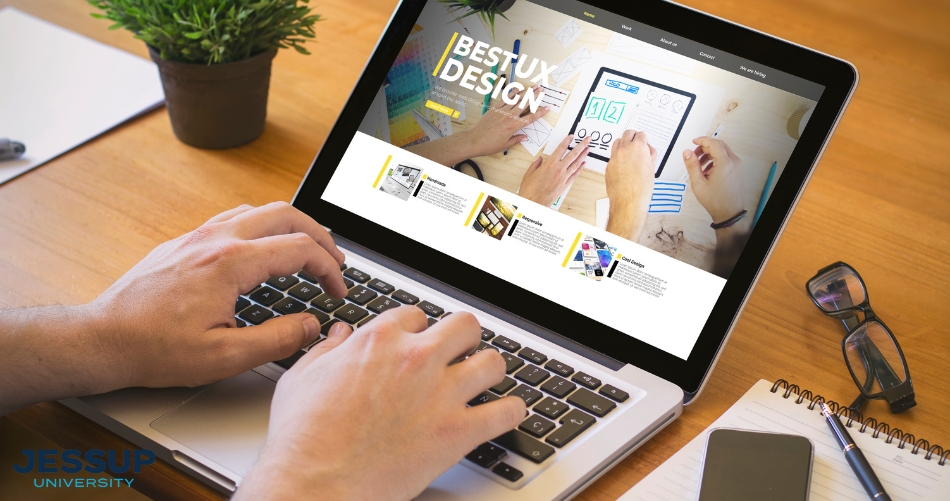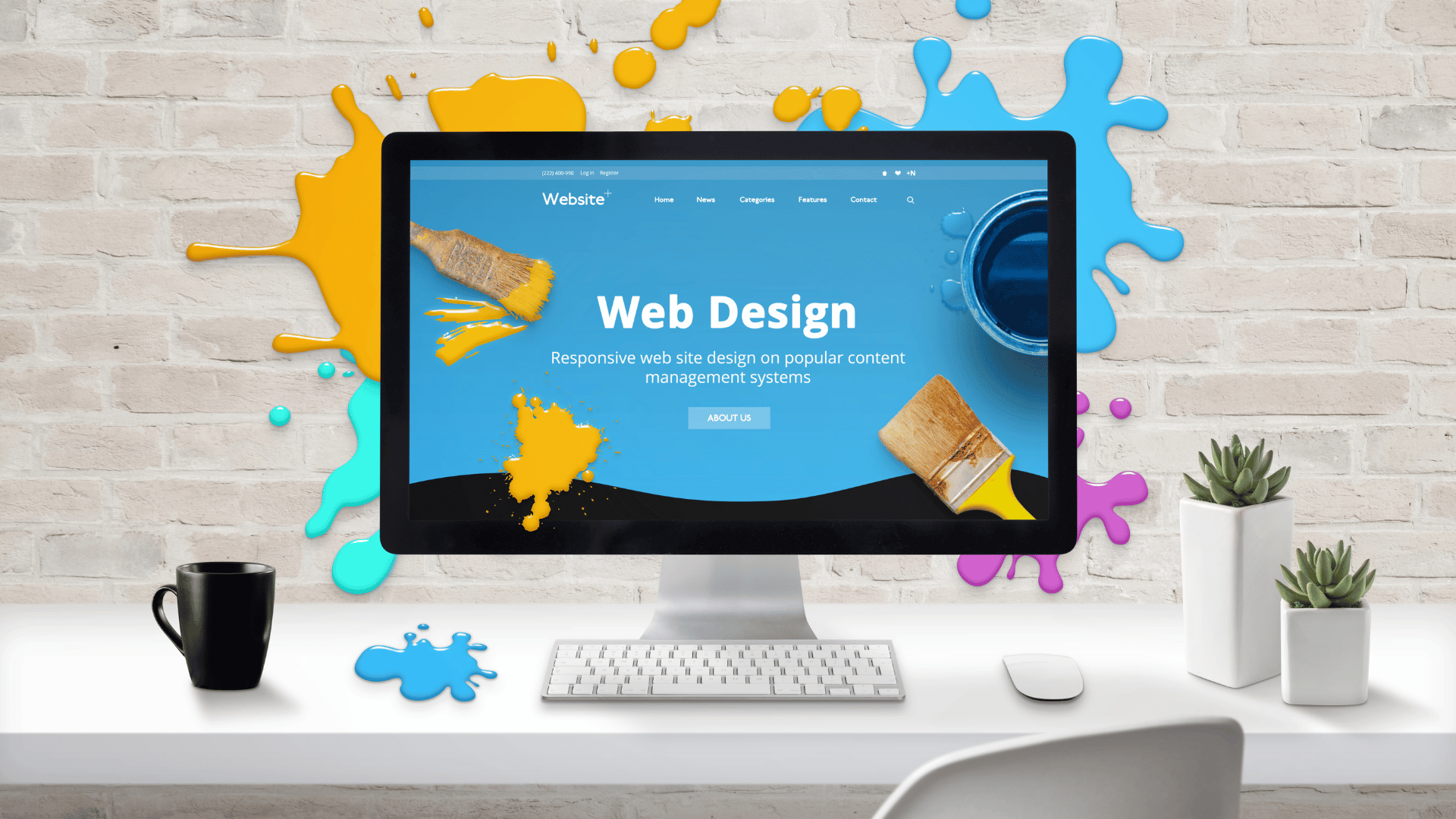Exploring Creative Fads in Web Design for Modern Services
The landscape of web design is continually developing, mirroring the dynamic requirements of modern businesses. Current patterns highlight a choice for minimalism, bold typography, and interesting interactivity. Companies significantly prioritize user experience via mobile-first concepts and individualized web content. Additionally, a concentrate on sustainability is gaining grip. Recognizing these trends is essential for businesses intending to stick out in a congested marketplace. What implications do these changes hold for the future of digital interaction?
Embracing Strong Typography
Strong typography has become a defining element in modern web design, capturing interest and sharing messages with striking clarity. This trend prioritizes visually impactful message that improves user interaction and brand name identification. Designers usually use oversized font styles and distinct fonts to produce a power structure, assisting viewers via content perfectly.
The critical use of strong typography allows for reliable storytelling, enabling brand names to connect their worths succinctly. It offers not only visual objectives however additionally functional ones, as it boosts readability throughout devices and display sizes.
As websites compete for user interest, vibrant typography stands out in a saturated electronic landscape. Its versatility allows designers to trying out contrasting designs and shades, even more magnifying its efficiency. Inevitably, accepting strong typography represents a shift in the direction of more communicative and expressive web design, fostering a deeper connection between brands and their audiences.
The Increase of Minimalist Design
As digital atmospheres become significantly cluttered, the surge of minimalist style supplies a revitalizing option that focuses on simpleness and performance. This design philosophy remove unneeded aspects, allowing web content to take spotlight. By concentrating on clean lines, ample white room, and a restricted color combination, minimalist style improves user experience and enhances navigation.
Organizations embracing this pattern goal to share their brand message clearly and effectively, cultivating a sense of calmness and clearness. The lack of disturbances assists users concentrate on essential details, bring about improved involvement and conversion prices. Additionally, minimalist design aligns well with mobile-first approaches, ensuring that internet sites remain straightforward and available across different gadgets.
Ultimately, the increase of minimal design mirrors a broader change in the direction of focusing on user needs and preferences, making it a powerful tool for modern services wanting to make a long-term impact in the electronic landscape.
Immersive Animations and Interactivity
While many web developers accept minimal looks, another engaging trend gaining traction is making use of immersive animations and interactivity. This strategy enhances user involvement by developing fascinating experiences that draw visitors right into the material. Designers use dynamic aspects such as animated histories, scrolling impacts, and interactive infographics to connect complicated concepts in an easily accessible fashion.
These computer animations not only give visual passion but likewise overview individuals through the navigating procedure, making communications extra instinctive. Hover results and animated shifts can encourage individuals to check out further, leading to raised time spent on the website.
This pattern aligns with the broader movement in the direction of narration in web style, where animations serve as narrative gadgets that communicate brand name messages efficiently. By integrating immersive animations and interactivity, companies can distinguish themselves in a congested online landscape, eventually improving user contentment and brand loyalty.
Mobile-First Style Principles
Mobile-first design concepts stress prioritizing user experience by guaranteeing web sites work perfectly on smaller screens. This technique includes receptive format methods that adapt to various gadget sizes while keeping aesthetic honesty. Additionally, it concentrates on touchscreen navigation layout, improving functionality for mobile individuals.
Prioritizing User Experience
How can designers properly prioritize user experience in a progressively mobile-centric globe? Stressing mobile-first layout concepts is vital, as users largely involve with web sites with smart phones. This strategy encourages designers to improve web content, ensuring it is navigable and easily accessible on smaller displays. Trick techniques consist of simplifying navigation, reducing tons times, and employing touch-friendly elements that enhance interactivity. Furthermore, focusing on clear typography and instinctive formats can significantly enhance user contentment. Designers need to continually gather user comments to improve their methods, adjusting to developing user needs and preferences. By concentrating on these elements, services can produce an engaging digital experience that promotes loyalty and drives conversions, ultimately aligning with the expectations these days's mobile customers.
Receptive Format Strategies
Designers embrace receptive design strategies to create versatile and flexible web experiences that satisfy numerous display sizes. This method prioritizes mobile-first layout concepts, ensuring peak performance on smaller gadgets prior to scaling up for larger screens. By making use of liquid grids, adaptable look at this website pictures, and media queries, developers can preserve a cohesive visual identification throughout all platforms. This approach not just enhances user involvement yet additionally enhances search engine rankings, as mobile-friendly sites are favored by search algorithms. In addition, responsive designs enable businesses to reach a more comprehensive audience, suiting individuals on tablet computers, desktop computers, and smartphones alike. Overall, applying these techniques is crucial for modern web design, ensuring that services remain competitive in an ever-evolving electronic landscape.
Touchscreen Navigating Design
With the rise of mobile tools, touchscreen navigation has actually ended up being a fundamental element of web design. Designers are significantly taking on mobile-first principles to boost user experience and involvement. Web Design services. Effective touchscreen navigation focuses on bigger buttons and user-friendly hop over to here gestures, enabling customers to connect quickly with web content. This method decreases stress and motivates expedition, as users can browse seamlessly with their fingers. Furthermore, including swipe gestures and tap functionality satisfies the all-natural habits of mobile customers. Responses devices, such as aesthetic signs and animations, improve functionality additionally by verifying activities. As touchscreens dominate user communications, using these layout components not only straightens with modern-day expectations but likewise cultivates a much more enjoyable and easily accessible surfing experience for all users
Individualized User Experiences
What makes a user feel absolutely involved on a site? The response frequently exists in personalized user experiences. By customizing web content and navigation to individual choices, services can create a purposeful link with their audience. This personalization can be accomplished through various approaches, such as evaluating user habits, utilizing cookies, and providing tailored recommendations based on previous interactions.
For example, e-commerce systems that recommend products based upon searching history not only improve user experience yet additionally enhance conversion prices. Furthermore, incorporating dynamic web content that adjusts to the user's location or time of day can further enrich involvement.
Additionally, personalized greetings or messages can make individuals feel valued and understood. As modern-day Related Site companies venture to stand apart in a competitive electronic landscape, welcoming individualized user experiences comes to be necessary, fostering loyalty and motivating repeat brows through. Ultimately, this method transforms a common website into an interactive platform that resonates with its audience.
Sustainability in Web Design
As the electronic landscape remains to progress, the relevance of sustainability in web design has actually gained substantial interest. Developers are significantly aware of the ecological influence their productions can have, triggering a change towards environmentally friendly techniques (Website Design Agency). Lasting web design concentrates on optimizing sites to minimize power intake and carbon impacts. Methods include utilizing minimalistic layout concepts, maximizing photos, and employing effective coding techniques to improve loading speeds
The choice of organizing carriers plays a vital role; numerous designers are now choosing for environment-friendly hosting services powered by eco-friendly power. By prioritizing ease of access and user-friendly navigating, sustainable layouts likewise deal with a more comprehensive audience, improving functionality. This mindful technique not only interest environmentally-minded customers yet also contributes to the overall longevity and performance of websites. Inevitably, sustainability in web design shows an expanding trend in the direction of accountable electronic practices that straighten with modern-day organization worths.

Frequently Asked Inquiries
Just How Can I Select the Right Color Design for My Website?
To pick the ideal color design for a web site, one need to consider the brand's identity, target market, and psychological influence. Making use of shade theory and testing combinations can improve user experience and visual charm significantly.
What Are the most effective Devices for Prototyping Website Design?
The best tools for prototyping internet styles consist of Figma, Lay out, Adobe XD, and InVision. These systems provide intuitive user interfaces, partnership functions, and considerable collections, making them ideal for designers to produce and improve their ideas properly.
Just how Do I Determine the Performance of My Web Design?
To determine web design performance, one ought to examine user engagement metrics, conversion prices, and usability comments (Web Design Agency). A/B screening and heatmaps can likewise supply insights right into user habits, directing required modifications for improved performance and user experience
What Are Typical Web Design Errors to Stay Clear Of?
Common web design mistakes include cluttered layouts, poor navigation, slow-moving packing times, absence of mobile optimization, insufficient contrast, and overlooking user responses. Preventing these challenges enhances user experience and boosts general effectiveness of the website.
Exactly how Often Should I Update My Web Site Design?
A website layout ought to be updated every 2 to 3 years, or earlier if significant adjustments in branding or technology take place. Routine updates maintain the site fresh, functional, and lined up with current user assumptions.
